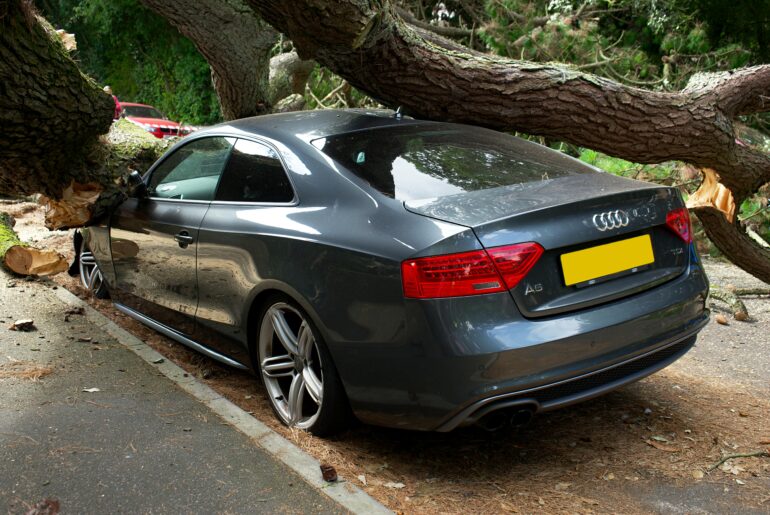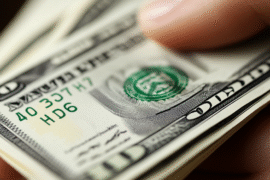This article may contain references to products or services from one or more of our advertisers or partners. We may receive compensation when you click on links to those products or services. Nonetheless, our opinions are our own.
The information presented in this article is accurate to the best of our knowledge at the time of publication. However, information is subject to change, and no guarantees are made about the continued accuracy or completeness of this content after its publication date.
- Ensuring Accurate Insurance Payouts for Totaled Vehicles
- Payout Process for Financed or Leased Vehicles
- Payouts for Fully Owned Vehicles
- Role of Drivers Versus Owners in Claims
- Lender Involvement in Insurance Payouts
- Shared Ownership and Lease Considerations
- Comparison of Payout Scenarios
- Effective Claim Filing Strategies
- Maximizing Insurance Payouts
- Community Engagement and Resources
- Frequently Asked Questions
- Closing Remarks
- Recommended Reads
Ensuring Accurate Insurance Payouts for Totaled Vehicles
When a vehicle is declared a total loss, determining who receives the insurance payout is critical for a smooth claims process. This involves understanding the roles of owners, drivers, lenders, and leasing companies, as well as state regulations and policy terms. Proper documentation and clear communication with insurers and lenders streamline the process. The following sections outline the procedures to ensure accurate payouts, maintain clarity, and adhere to editorial and SEO standards. By following these guidelines, individuals can navigate the complexities of insurance claims with confidence.
Payout Process for Financed or Leased Vehicles
For financed or leased vehicles, the insurance payout typically goes to the lender or leasing company first, as they hold a legal claim until the loan or lease is paid off. The insurance company assesses the vehicle’s actual cash value (ACV) and sends the payment to cover the remaining balance. If the payout exceeds the owed amount, the vehicle owner receives the difference. If it falls short, the owner may need to cover the remaining balance. Clear communication with the lender or leasing company ensures a smooth process and prevents delays.
Payouts for Fully Owned Vehicles
When a vehicle is fully owned with no liens, the insurance check is issued directly to the owner, who is typically the policyholder. This simplifies the process, as no third parties, such as lenders, are involved. Owners should verify their policy terms and ensure all documentation, including accident reports and photos, is organized to support the claim. Understanding state-specific regulations can further clarify the payout process. This direct approach allows owners to receive funds promptly and efficiently.
Role of Drivers Versus Owners in Claims
The vehicle owner, as the policyholder and titleholder, is generally entitled to the insurance payout, not the driver. For example, if a borrowed car is totaled, the owner receives the check, regardless of who was driving. If the driver is at fault, the owner’s insurance covers damages to others, but the payout for the totaled vehicle still goes to the owner. Clear communication between drivers and owners about insurance arrangements before borrowing a vehicle can prevent misunderstandings. This distinction ensures claims align with ownership and policy terms.
Lender Involvement in Insurance Payouts
Lenders play a significant role when a financed vehicle is totaled, as the car serves as collateral for the loan. The insurance company typically issues the check to the lender to cover the outstanding loan balance. Owners must notify lenders promptly and provide insurance details to facilitate the process. If the payout exceeds the loan balance, the owner receives the remainder; if not, they may owe the difference. Maintaining open communication with lenders ensures compliance and protects credit standings.
In shared ownership or lease scenarios, the payout process depends on policyholder designation and lease terms. The primary policyholder typically receives the check, but in leases, the leasing company, as the titleholder, has priority to cover any outstanding balance. State regulations may also influence payout distribution, so understanding local laws is essential. Joint owners may need to agree on how funds are handled. Being informed about these factors helps manage expectations and facilitates negotiations if needed.
Comparison of Payout Scenarios
The following table compares payout scenarios for different ownership types, providing clarity on who receives the insurance check:
| Scenario | Recipient | Key Considerations |
|---|---|---|
| Financed Vehicle | Lender (up to loan balance) | Payout covers the loan first; the owner gets the excess or owes the shortfall. |
| Leased Vehicle | Leasing Company | Titleholder receives a payout to cover the lease balance; the terms dictate further distribution. |
| Fully Owned Vehicle | Vehicle Owner | Direct payout to owner; no third-party involvement. |
| Shared Ownership | Primary Policyholder/Co-Owners | Agreement between co-owners is required; state laws may apply. |
| Borrowed Vehicle | Vehicle Owner | Driver has no claim; the owner’s policy dictates payout. |
This table clarifies payout recipients based on ownership and financing status. It avoids duplicating body text by focusing solely on recipient roles and key considerations. The accompanying paragraph explains that understanding these scenarios helps individuals anticipate payout distribution and prepare necessary documentation, ensuring a streamlined claims process.
Effective Claim Filing Strategies
Filing an insurance claim effectively requires thorough preparation. Document all details, including photos of the damage, police reports, and repair estimates, to support the claim. Review policy terms to understand coverage limits and deductibles. Submit claims promptly to avoid delays, and maintain regular contact with the insurance adjuster to track progress. Clear, factual communication with insurers and lenders prevents complications and ensures timely payouts, aligning with the goal of securing fair compensation.
Maximizing Insurance Payouts
To secure a fair insurance payout, advocate for yourself by researching the vehicle’s market value using comparable listings to challenge low offers. Maintain detailed records of all interactions with the insurer and document the accident thoroughly. Negotiate confidently if the initial offer seems insufficient, presenting evidence like repair estimates or market data. Understanding policy terms, including coverage limits and gap insurance benefits, strengthens your position. These steps ensure you receive the compensation you’re entitled to without undue delays.
Community Engagement and Resources
Insurance companies often provide resources to guide policyholders through the claims process, such as online portals or customer support lines. Engaging with these resources, like insurer-provided FAQs or helplines, can clarify payout procedures. Some insurers maintain an active social media presence, offering tips and updates to assist customers. Joining online forums or communities for car owners can also provide insights from others’ experiences. These resources empower individuals to navigate claims confidently and stay informed about their rights.
Voted "Best Overall Budgeting App" by Forbes and WSJ
Monarch Money helps you budget, track spending, set goals, and plan your financial future—all in one app.
Get 50% OFF your first year with code MONARCHVIP
Frequently Asked Questions
Who receives the insurance check for a totaled car?
The policyholder typically receives the check, but if the vehicle is financed or leased, the lender or leasing company gets priority to cover any outstanding balance.
What happens if my car is financed?
The lender receives the insurance payout to settle the loan balance. Any excess funds go to the owner; if the payout is less, the owner may owe the difference.
How are payouts handled for leased vehicles?
The leasing company, as the titleholder, receives the check to cover the lease balance. Terms of the lease dictate any further distribution to the lessee.
Can drivers claim the payout if they don’t own the car?
No, the payout goes to the vehicle owner or policyholder, not the driver, even if the driver was involved in the accident.
What role does gap insurance play?
Gap insurance covers the difference between the insurance payout and the remaining loan balance if the payout is insufficient, protecting the owner from additional costs.
Closing Remarks
Navigating insurance payouts after a total loss requires understanding ownership, financing, and policy terms. By documenting claims thoroughly and communicating clearly with insurers and lenders, individuals can secure fair compensation. Structured processes, such as those for financed or leased vehicles, ensure payouts align with legal and financial obligations. Avoiding common pitfalls, like delayed filings or incomplete documentation, enhances efficiency. This approach delivers clear, reliable outcomes for vehicle owners seeking resolution after a total loss.

Reviewed and edited by Albert Fang.
See a typo or want to suggest an edit/revision to the content? Use the contact us form to provide feedback.
At FangWallet, we value editorial integrity and open collaboration in curating quality content for readers to enjoy. Much appreciated for the assist.
Did you like our article and find it insightful? We encourage sharing the article link with family and friends to benefit as well - better yet, sharing on social media. Thank you for the support! 🍉
Article Title: Who Gets the Insurance Check After a Totaled Car?
https://fangwallet.com/2025/08/13/who-gets-the-insurance-check-after-a-totaled-car/The FangWallet Promise
FangWallet is an editorially independent resource - founded on breaking down challenging financial concepts for anyone to understand since 2014. While we adhere to editorial integrity, note that this post may contain references to products from our partners.
The FangWallet promise is always to have your best interest in mind and be transparent and honest about the financial picture.
Become an Insider

Subscribe to get a free daily budget planner printable to help get your money on track!
Make passive money the right way. No spam.
Editorial Disclaimer: The editorial content on this page is not provided by any of the companies mentioned. The opinions expressed here are the author's alone.
The content of this website is for informational purposes only and does not represent investment advice, or an offer or solicitation to buy or sell any security, investment, or product. Investors are encouraged to do their own due diligence, and, if necessary, consult professional advising before making any investment decisions. Investing involves a high degree of risk, and financial losses may occur including the potential loss of principal.
Source Citation References:
+ Inspo
There are no additional citations or references to note for this article at this time.












































